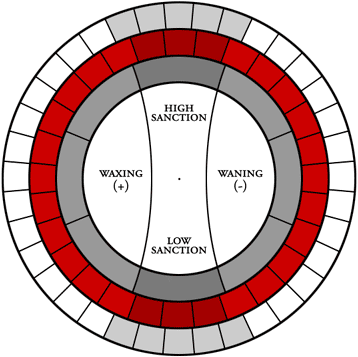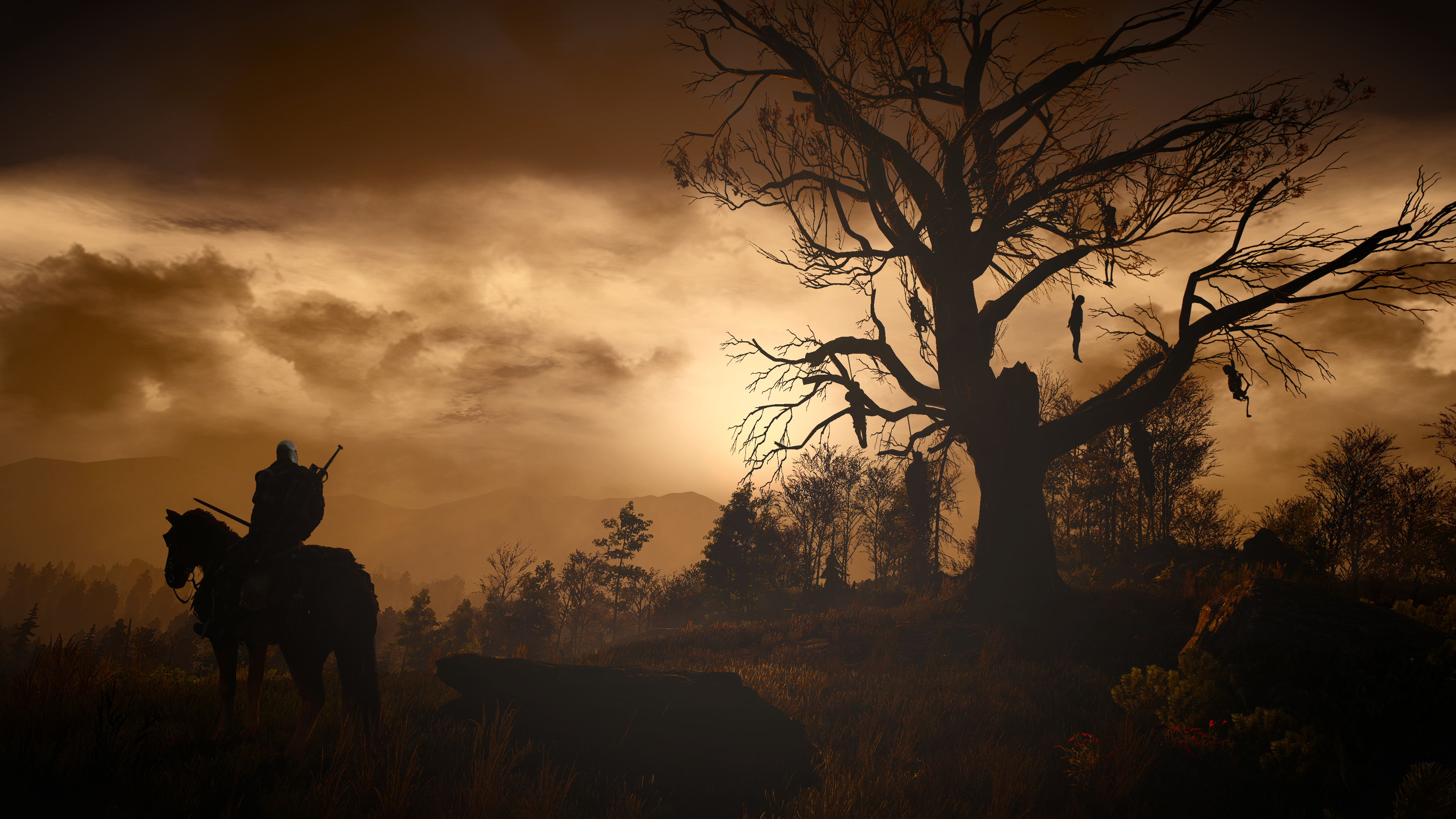The Arcane
There is a natural ebb and flow to magic. When the tide of magic is high, its potency goes up, dormant magic comes back alive, the amount of people who can channel it goes up, and the fabric between the planes grows thin. At low tide, magic is weak, certain magic goes dormant, only the most sensitive people are able to channel it, and the fabric between the planes becomes almost impenetrable.
For aeons Gaea has been experiencing a low magic tide, resulting in far fewer arcanists (e.g. mages, sorcerers and warlocks), far fewer demons and supernatural creatures, and an overall loss in the understanding of powerful spells, enchantments, dweomers and artifacts. Some magical artifacts went fully or partially dormant, the power infused within unable to be sustained by the levels of magic. Tomes, grimoires, heirlooms and artifacts that no longer functioned were stored away for future generations, to be revealed when Gaea saw a high magic tide once again. Over time, some of these vaults and caches were forgotten or lost.
People’s memory of powerful magic have faded and made place for superstition and fear. Hermits, mystics, druids, pellars, witches and crones are often shunned in polite society, mostly because they are considered frauds. They find their homes on the edge of small villages, secluded rural areas or deep in the woods. The local peasantry, superstitious and trying to make their way in life with few means, often turn to these people for help. They fear them, but at the same time revered them for the help they can offer. But their help doesn’t always work, and many a mystic has been burned alive in angry retribution to a failed ointment, powder or salve.
The szygani, travelling families from the contested isles in the south-east of the Verdant Kingdoms who follow the old gods and seemed to have a closer connection to the magics of the past, are mostly feared. With their strange ways, their unusual customs, their different tongue and appearance, they are known to curse anyone who crosses them. More often than not their curses come true, and so the fear for them grows, but also their reputation. Only the fearless and desperate approach them for their help.
So now, arcanists, already rare, have a far harder time achieving the same results as their predecessors. It means that accomplished arcanists are even more rare, since most do not have the ability, ambition, dedication or lifespan to reach those legendary heights.
But slowly the tide of magic is starting to turn, and Gaea is slowly changing. Soon, magic will be more common place, and with the coming of magic, so will come the creatures and demons. People who had started to believe that the legends were just stories to frighten each other with while sitting around the hearth fire will have to quickly come to terms with a world that’s rapidly becoming more dangerous.
The Divine
The ebb and flow of magic also effects the people of faith (e.g. clerics, paladins, druids, rangers). The intuitive connection they share with their patron is weakened as significantly as an arcanist’s connection to magic. As a result, when the tide of magic is high, and people of faith are at the height of their abilities, churches and temples are full with believers. The reverse is true at low tide. People shy away from churches and choose to congregate at home, with family. Belief doesn’t wane with the waning of magic, just trust in the institutions and its representatives.
The Moons
Three moons appear in the night’s sky, a bright silver one, a blood red one, and a barely visible blue moon. There are many stories and superstitions about the moons, most of them wildly inaccurate. One thing that few people are aware of that is actually true is that the phases of the moons affect the efficacy of magic.
Silvermoon (Lačhi)
The largest and clearest of the three moons is called the Silvermoon. It appears as a great, silver orb in the night’s sky which sheds a brilliant, crystal clear light when it is prominent in the heavens. The szygani refer to it as Lačhi, one of the old gods. It is the patron of all good-aligned spellcasters. The silvermoon’s cycle is the longest of the three moons, lasting for 36 days from full moon to full moon. Its high and low sanctions last for five days, while its waxing and waning phases last for 13 days.
Bloodmoon (Maškar)
The second largest moon is the Bloodmoon and it appears in the night’s sky as a startlingly deep red orb. The szygani call this moon Maškar and it is the matron of neutrally-aligned spellcasters. The bloodmoon cycle takes 28 days to complete, with a high and low sanction that last three days each, while its waxing and waning phases take 11 days to complete.
Darkmoon (Nasul)
The smallest and faintest of the three moons is the Darkmoon. It gets its name from it’s midnight blue colour, which makes it hard to distinguish from the night’s sky. The szygani call this moon Nasul and they believe that it’s the matron of all evil-aligned spellcasters. The darkmoon is on the fastest cycle, lasting only eight days. It only remains in high and low sanction for a day, and it’s waxing and waning phases last for three days each.
Moon Phases, Alignment and the Night of Three Eyes
There are four phases each moon occurs in, as illustrated above; waxing, waning, high sanction and low sanction. Depending on the length of a moon’s cycle, the length of each phase varies. Each phase has several effects on a caster’s spell or prayer as described below.
| Moon Phase Effects Table | |||
| Moon Phase | Saving Throw | Additional Spell Slot** | Effective Caster Level |
| Low Sanction | -1 | 0 | -1 |
| Waning | Normal | 0 | Even |
| Waxing | Normal | +1 | Even |
| High Sanction | +1 | +2 | +1* |
| *Only available to spellcasters of 6th level or higher, with a primary ability score of 15 or higher. | |||
| **An extra spell slot for every level you can cast, up to a maximum of your primary ability score modifier. If your modifier is +2, then only level 1 and 2, e.g. | |||
When two moons are in alignment, meaning that two moons are both in high sanction, they strengthen each other’s effect. When all three moons are in alignment, they call it the Night of Three Eyes, and the three moons boost each other’s effect on magic even further.
| Moon Alignment Effects Table |
||||
| Moon Alignment | Saving Throw | Additional Spells | Effective Caster Level | Name |
| Silvermoon and Bloodmoon | +1 | +1 | +1 | The Night of Honeyed Eyes |
| Bloodmoon with Darkmoon | +1 | +1 | +1 | The Night of Violet Eyes |
| Silvermoon with Darkmoon | +1 | 0 | Normal | The Night of Cerulean Eyes |
| All three moons | +2 | +2 | +1 | The Night of Three Eyes |
Note that the moon bonuses from phase and alignment are cumulative.
The Solstice and Equinox
Similar to the phases and alignment of the moons, the winter and summer solstice as well as the spring and autumn equinox has a profound effect on the power of both arcane and divine magic. Both the equinoxes affect neutrally-aligned spellcasters, while the summer solstice affects good-aligned spellcasters and the winter solstice affects evil-aligned spellcasters.
| Solstice and Equinox Effects Table | |||
| Saving Throw | Additional Spells | Effective Caster Level | |
| Spring Equinox (20th day of Spring Dawn, 10th day, 2nd ride) | +1 | +1 | Normal |
| Summer Solstice (21st day of Summer Light, 1st day, 3rd ride) | +1 | +1 | +1 |
| Autumn Equinox (20th day of Autumn Harvest, 10th day, 2nd ride) | +1 | +1 | Normal |
| Winter Solstice (21st day of Winter Eve, 1st day, 3rd ride) | +1 | +1 | +1 |
Note that the solstice and equinox bonuses are cumulative with the moon phase and alignment bonuses.

